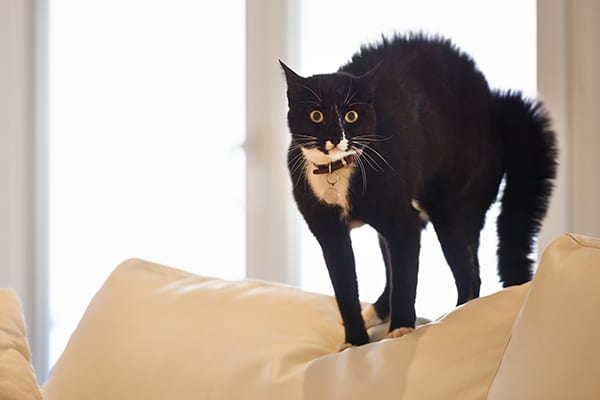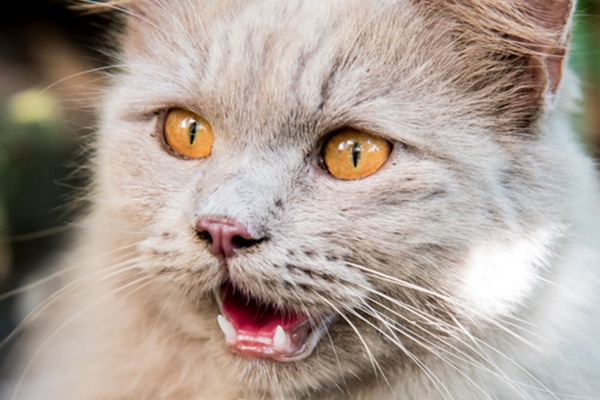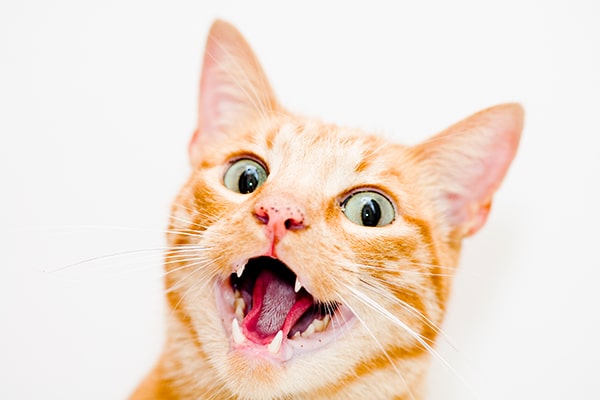Cat Pupils: Here’s What Your Cat’s Eyes Are Telling You
The post Cat Pupils: Here’s What Your Cat’s Eyes Are Telling You by JaneA Kelley appeared first on Catster. Copying over entire articles infringes on copyright laws. You may not be aware of it, but all of these articles were assigned, contracted and paid for, so they aren't considered public domain. However, we appreciate that you like the article and would love it if you continued sharing just the first paragraph of an article, then linking out to the rest of the piece on Catster.com.
A cat’s eyes are pretty amazing. They allow a cat to see in near-darkness and provide her with a great ability to detect motion in order to hunt prey. But the thing that really fascinates a lot of people are those vertical, slit-shaped cat pupils. Cat pupils do much more than respond to the level of light in a room, though. Those cat pupils also give you a good sense of how your cat is feeling — emotionally and physically.
Here are a few cool things to know about cat pupils:
Cat pupils show your cat’s mood

Cat eyes, and especially cat pupils, are the windows to your feline’s soul — and emotions. Photography ©PeopleImages | DigitalVision / Getty.
Our cats communicate with us in very subtle ways, and one of those ways is through their eyes. A cat’s mood can be determined by a combination of understanding cat body language and cat pupils.
Narrow pupils signal an aroused cat

Narrow pupils mean your cat is feeling aroused by anger, fear or pleasure. Photography ©graphixchon | Thinkstock.
Arousal can be caused by many things — anger, fear and pleasure, primarily. These emotions can result in the sudden contraction of cat pupils so that they become narrow slits. You might see this if your cat encounters a catnip mouse and prepares to attack it. Even the smell of catnip itself can cause arousal in a cat that likes the stuff.
You may also see the cat pupils contract suddenly if she’s about to “kill” her favorite toy (or your toes moving around under the blankets). Anger can also cause cat pupils to contract into slits; this is usually accompanied by growling or hissing, though.
If the cat pupils are narrow and the eyes are squinted, that’s a sign of aggression. The squint helps to protect her eyes from an opponent’s claws.
However, if the cat pupils are narrow and your cat is relaxing on your lap and purring, you can probably guess that she’s experiencing great pleasure.
Wide pupils signal an excited or scared cat

Large cat pupils signify two emotional extremes — excitement or fear. Photography ©aluxum | iStock / Getty Images Plus.
Yes, it’s true: wide cat pupils can mean both excitement and fear, so you’ll have to suss out the meaning of your cat’s wide eyes by looking at what’s going on around her and her other body language cues. For example, when my cat, Bella, gets surprised, her pupils go wide and she jumps up in the air with the classic “bottle brush tail.” Wide cat pupils can also indicate excitement. When you pull out your cat’s favorite treats, her pupils may get wide in anticipation.
On the other hand, wide cat pupils may indicate anxiety. If your cat is sitting there, looking tense (with a hunched back and her tail close to her side), and her pupils are also wide, you can assume that she’s anxious about something. You’ve probably seen this when you take your cat to the vet and she really doesn’t want to be there.
Wide cat pupils can also indicate abject terror. Maybe you’ve seen this if you’ve been in a huge thunderstorm, just before your cat runs for the smallest and darkest place she can find.
What if the cat pupils are different sizes?
When one of the cat pupils is larger than the other, your cat has a condition called anisocoria. Anisocoria is a symptom, not a disease itself. Sometimes, it’s an emergency.
“If anisocoria occurs suddenly, you should consider this an emergency situation and seek veterinary care immediately to lessen the chance that your cat’s vision will be permanently affected,” Cheryl Yuill, DVM, MSc, CVH, writes in an article on anisocoria in cats for the VCA.
When cat pupils are different sizes, it can indicate that your cat is suffering from one of the following issues: a brain injury due to trauma (such as a fall or being hit by a car or a disease like a stroke); an injury to the surface of the eye; a problem with the nerves running to the affected eye; glaucoma, a very painful pressure buildup in the eye; inflammation of the interior of the eye; retinal disease; or even cancer. Cats may also develop anisocoria due to spastic pupil syndrome, which is associated with the feline leukemia virus.
The final word on cat pupils
Cat pupils are an amazingly expressive part of your feline friend’s body language repertoire. By studying your cat’s eyes along with her body language, you’ll be able to understand your cat better and avoid unwanted aggression or fear. The pupils are also a reflection of your cat’s health. Don’t hesitate to get your cat to the vet if you notice that her pupils are different sizes.
Tell us: Have you noticed your cat’s pupils changing different shapes and sizes?
Thumbnail: Photography ©manop1984 | iStock / Getty Images Plus.
This piece was originally published in 2018.
Read more about cat eyes on Catster.com:
- 7 Cool Facts About Cat Eye Colors
- 4 Things to Know About Cats With Blue Eyes
- Cat Eye Discharge — What’s Normal and What’s Not
Read more about cat body language on Catster.com:
- 8 Ways to Understand Cat Tail Language
- The Meaning Behind That Cat Slow Blink
- Cats With Their Ears Back — What It Means in Cat Language
The post Cat Pupils: Here’s What Your Cat’s Eyes Are Telling You by JaneA Kelley appeared first on Catster. Copying over entire articles infringes on copyright laws. You may not be aware of it, but all of these articles were assigned, contracted and paid for, so they aren't considered public domain. However, we appreciate that you like the article and would love it if you continued sharing just the first paragraph of an article, then linking out to the rest of the piece on Catster.com.




Post a Comment